 W
WThe Boltysh crater or Bovtyshka crater is an impact crater in the Kirovohrad Oblast of Ukraine, near the village of Bovtyshka. The crater is 24 kilometres (15 mi) in diameter and its age of 65.17 ± 0.64 million years, based on argon dating techniques, is within error of that of Chicxulub crater in Mexico and of the Cretaceous–Paleogene boundary. The Chicxulub impact is believed to have caused the mass extinction at the end of the Cretaceous period, which included the extinction of the non-avian dinosaurs. The Boltysh impact likely occurred several thousand years after Chicxulub, suggesting the extinction event may have been driven by multiple meteor strikes over an extended period of time about 65 million years ago.
 W
WThe Bow City crater is a potential meteorite impact crater located in southern Alberta, Canada.
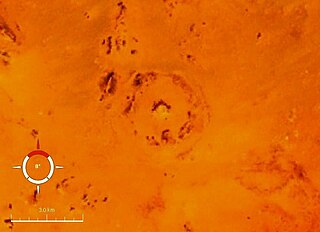 W
WThe BP Structure, also known as Gebel Dalma, is an exposed impact crater in Libya. It is so called because it was identified by a BP geological survey team.
 W
WCarswell is an impact crater within the Athabasca Basin of the Canadian Shield in northern Saskatchewan, Canada. It is 39 kilometres (24 mi) in diameter and the age is estimated to be 115 ± 10 million years. The crater is exposed at the surface.
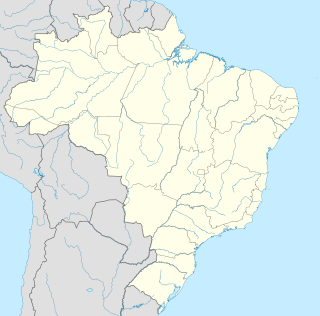 W
WCerro do Jarau crater is a 13.5 kilometres (8.4 mi) diameter circular feature in the Paraná Basin, Rio Grande do Sul in southern Brazil, close to the border with Uruguay. The Russian Academy of Sciences lists the structure as a probable impact crater.
 W
WThe Chicxulub crater is an impact crater buried underneath the Yucatán Peninsula in Mexico. Its center is located offshore near the town of Chicxulub, after which the crater is named. It was formed when a large asteroid or comet about 11 to 81 kilometers in diameter, known as the Chicxulub impactor, struck the Earth. The date of the impact coincides precisely with the Cretaceous–Paleogene boundary, slightly more than 66 million years ago, and a widely accepted theory is that worldwide climate disruption from the event was the cause of the Cretaceous–Paleogene extinction event, a mass extinction in which 75% of plant and animal species on Earth became extinct, including all non-avian dinosaurs.
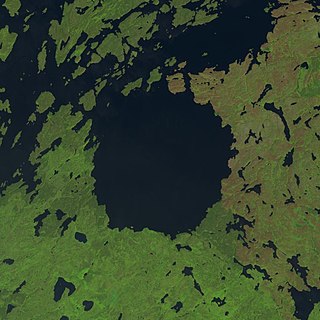 W
WDeep Bay is a bay near the south-western tip of Reindeer Lake in Saskatchewan, Canada. The bay is strikingly circular and very deep in an otherwise irregular and shallow lake. It is the deepest body of water in Saskatchewan.
 W
WDellen is a lake system in the province of Hälsingland, Sweden. It consists of two lakes, Northern Dellen and Southern Dellen, appreciated among fly-fishermen for their population of brown trout.
 W
WGosses Bluff is thought to be the eroded remnant of an impact crater. Known as Tnorala to the Western Arrente people of the surrounding region, it is located in the southern Northern Territory, near the centre of Australia, about 175 km (109 mi) west of Alice Springs and about 212 km (132 mi) to the northeast of Uluru. It was named by Ernest Giles in 1872 after Australian explorer William Gosse's brother Henry, who was a member of William's expedition.
 W
WKara is a meteor crater in the Yugorsky Peninsula, Nenetsia, Russia.
 W
WThe Kentland structure, also known as the Kentland crater or the Kentland disturbed area, is an impact structure located near the town of Kentland in Newton County, Indiana, United States.
 W
WLappajärvi is a lake in Finland, in the municipalities of Lappajärvi, Alajärvi and Vimpeli. It is formed in a 23 km (14 mi) wide, partly eroded meteorite impact crater. The lake is part of Ähtävänjoki basin together with Lake Evijärvi that is located downstream (north) of it.
 W
WThe Manson crater is an impact crater near the site of Manson, Iowa where an asteroid or comet nucleus struck the Earth during the Cretaceous Period, approximately 74 Ma. It was one of the largest known impact events to have happened in North America. Previously it was thought to have led to the extinction of the dinosaurs until isotopic ages proved that it was too old.
 W
WMaple Creek is a subterranean meteorite crater in Saskatchewan, Canada. It is 6 km (3.7 mi) in diameter and the age is estimated to be less than 75 million years. The crater is buried beneath younger sediments and cannot be seen at the surface.
 W
WMien is a lake in southern Sweden, 12 km (7.5 mi) southwest of the town of Tingsryd. The lake is formed within a meteorite crater.
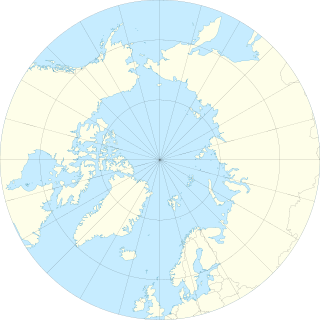 W
WMjølnir is a meteorite crater on the floor of Barents Sea off the coast of Norway. It is 40 km (25 mi) in diameter and the age is estimated to be 142.0 ± 2.6 million years. The bolide was an estimated 2 km (1.2 mi) wide.
 W
WThe Morokweng crater is an impact crater buried beneath the Kalahari Desert near the town of Morokweng in South Africa's North West province, close to the border with Botswana.
 W
WMount Toondina crater is an impact structure, the eroded remnant of a former impact crater, located in northern South Australia in the locality of Allandale Station about 24 km (15 mi) south of the town of Oodnadatta. Mount Toondina is the high point of a circular topographic feature rising out of an otherwise relatively flat desert area of the Eromanga Basin. An impact origin was first suggested in 1976, challenging the earlier diapir hypothesis, and strongly supported by subsequent studies. A geophysical survey using gravity methods indicates an internal structure typical of complex impact craters, including an uplifted centre, and suggests that the original crater was about 3–4 km in diameter. The crater must be younger than the Early Cretaceous age of the rocks in which it is situated, but otherwise is not well dated. It has clearly undergone significant erosion since the impact event.
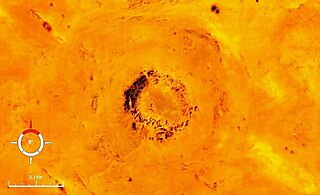 W
WOasis is a meteorite crater in Libya. The crater is exposed at the surface, and has been significantly eroded. The prominent topographic ring is only the central uplift, while the original crater rim is estimated to have been 18 km in diameter. The age is estimated to be less than 120 million years.
 W
WOuarkziz is a meteorite impact crater in Algeria. It is 3.5 kilometers in diameter and the age is estimated to be less than 70 million years. The crater is exposed at the surface.
 W
WPiratininga crater is a 12 kilometres (7.5 mi) diameter circular feature in the Paraná Basin of São Paulo State in Brazil. It is a possible impact crater, but further investigation is needed to obtain more information on the structure. The Russian Academy of Sciences listed the structure as a probable impact crater in 2017, but as questionable in 2019.
 W
WPraia Grande crater is a 20 kilometres (12 mi) diameter circular feature in the Santos Basin offshore Brazil. It is a possible impact crater that has been identified on 3D seismic by Petrobras in 2004. Further investigation is needed to obtain more information on the structure. The Russian Academy of Sciences lists the structure as a probable impact crater.
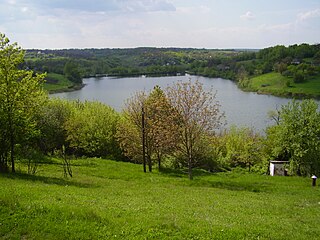 W
WRotmistrovka is an impact crater in Ukraine.
 W
WSanta Marta crater is a newly confirmed impact crater in Piauí State, northeastern Brazil. It is 10 kilometres (6.2 mi) in diameter and it is estimated to have formed between 100 and 66 Ma, during the Late Cretaceous.
 W
WThe Shiva Crater is a geologic structure, which is hypothesized by Sankar Chatterjee and colleagues to be a 500-kilometre (310 mi) diameter impact structure. This geologic structure consists of the Bombay High and Surat Depression. They lie beneath the Indian continental shelf and the Arabian Sea west of Mumbai, India. Chatterjee named this structure after Shiva, the Hindu god of destruction and renewal. It is presently (2019) on the list of probable impact craters and is rated '1' based on three-step confidence level criteria of Anna Mikheeva of Russian Academy of Sciences, applied to the impact sites that have appeared several times in the literature and/or have been endorsed by the Impact Field Studies Group (IFSG) and/or Expert Database on Earth Impact Structures (EDEIS).
 W
WSierra Madera crater is a meteorite crater (astrobleme) in southwestern Pecos County, Texas, United States. The central peak of the rebound structure of the impact crater rises 793 ft (242 m) above the surrounding land. The peak is visible from U.S. Highway 385 between Fort Stockton, Texas and Marathon, Texas. The Sierra Madera crater is located on private property on the La Escalera Ranch.
 W
WSilverpit crater is a buried sub-sea structure under the North Sea off the coast of the island of Great Britain. The 20 km crater-like form, named after the Silver Pit — a nearby sea-floor valley recognized by generations of fishermen — was discovered during the routine analysis of seismic data collected during exploration for gas in the Southern North Sea Sedimentary Basin.
 W
WSteen River is an impact structure in Alberta, Canada. It is 25 km (16 mi) in diameter and the age is estimated to be 91 ± 7 million years. The crater is not exposed at the surface. The crater was partially eroded prior to burial, and lies under 200 m (660 ft) of sediments.
 W
WTin Bider is an impact crater that sits in dry, rugged terrain in Algeria. The crater was formed in the last 70 million years, perhaps in the late Cretaceous or early Tertiary Period. Spanning 6 kilometres, the crater sits at the southern end of a range of hills. The elevated position and concentric rings of Tin Bider suggest that its structure is complex.
 W
WTookoonooka is a large meteorite impact crater (astrobleme) situated in South West Queensland, Australia. It lies deeply buried within Mesozoic sedimentary rocks of the Eromanga Basin and is not visible at the surface.
 W
WVargeão Dome is a meteorite crater in Santa Catarina State, Brazil, straddling the municipalities of Vargeão, Faxinal dos Guedes, and Passos Maia.
 W
WThe Vista Alegre crater is a meteorite crater in Coronel Vivida, Paraná State, Brazil. On the surface it appears as a circular, relatively flat plain within otherwise hilly terrain.
 W
WThe Wetumpka impact crater is the only confirmed impact crater in Alabama, United States. It is located east of downtown Wetumpka in Elmore County. The crater is 4.7 miles (7.6 km) in diameter and its age is estimated to be about 85 million years, based on fossils found in the youngest disturbed deposits, which belong to the Mooreville Chalk Formation.